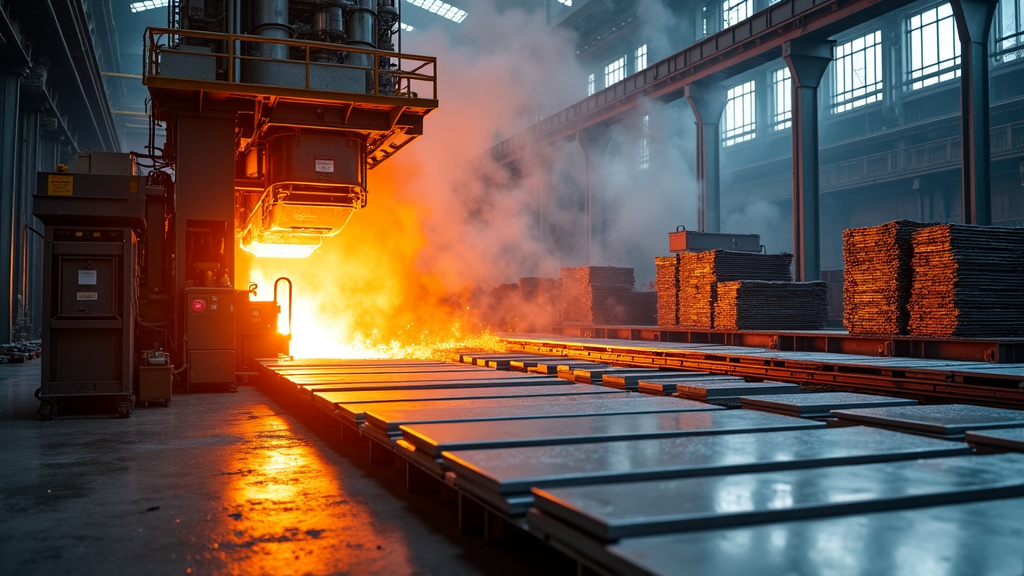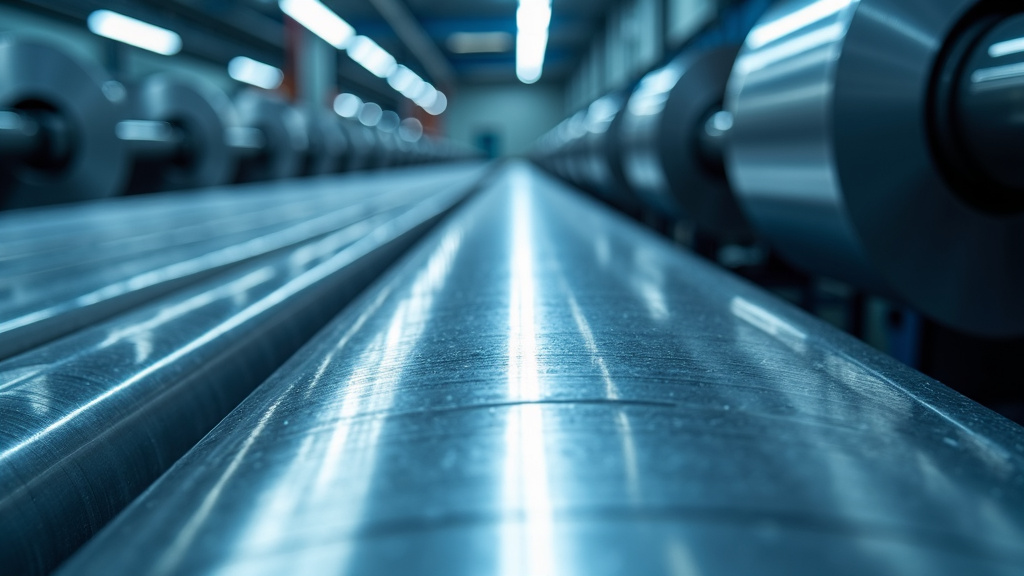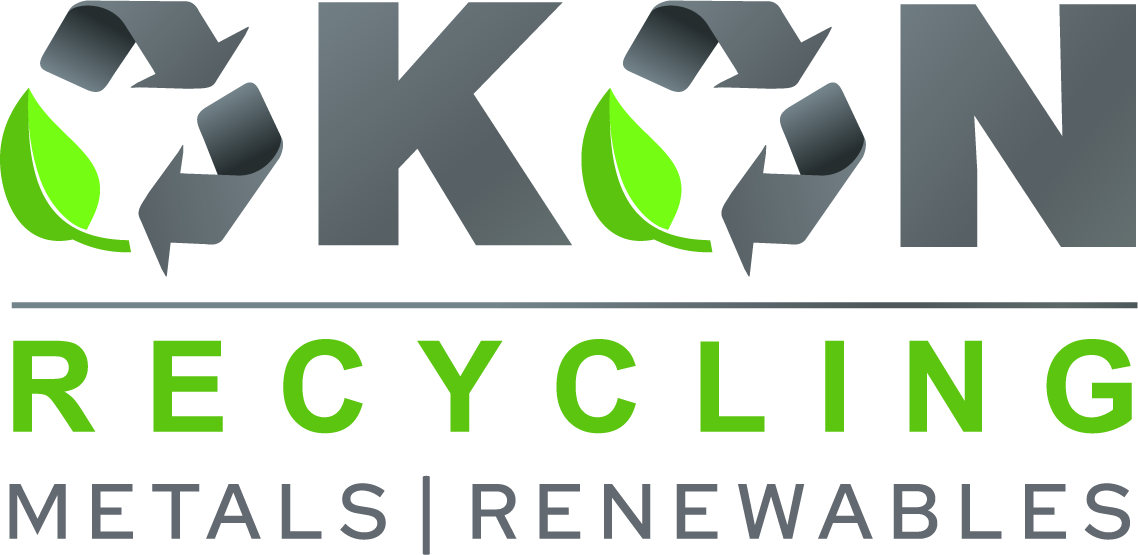5901 Botham Jean Blvd, Dallas, TX 75215
Stainless Steel Recycling: A Sustainable Solution for Metal Waste
March 25, 2025From gleaming kitchen appliances to towering skyscrapers, stainless steel surrounds us in ways we often overlook. Did you know the average household contains over 400 pounds of this versatile metal? As ubiquitous as it is durable, stainless steel’s prevalence in our daily lives highlights the critical importance of efficient stainless steel recycling.
In an era where sustainability is essential, recycling stainless steel offers hope for environmentally conscious industries and consumers. This remarkable material, known for its corrosion resistance and longevity, presents a unique opportunity in metal waste management.
Stainless steel’s inherent properties make it ideal for recycling, as it can be melted down and reformed without losing its essential characteristics. This cycle of reuse conserves valuable natural resources and significantly reduces the energy consumption associated with producing new steel from raw materials. According to industry experts, recycling stainless steel can save up to 33% of the energy required for primary production.
The Environmental Impact of Stainless Steel Production

Stainless steel, known for its durability and corrosion resistance, carries significant environmental costs during production. The energy-intensive processes required to create virgin stainless steel lead to substantial CO2 emissions and resource consumption. However, recycling stainless steel presents a promising way to mitigate these environmental impacts.
Producing new stainless steel from raw materials has a notable environmental toll. According to the International Stainless Steel Forum, manufacturing one ton of stainless steel from virgin materials generates about 2.90 tonnes of CO2 emissions. This process also consumes large amounts of water, electricity, and natural resources like iron ore, chromium, and nickel.
In contrast, recycling existing stainless steel significantly reduces these environmental impacts. The same source indicates that producing stainless steel with 85% recycled content generates only 1.45 tonnes of CO2 per ton—a 50% reduction compared to virgin production. This highlights the potential of recycling to conserve resources and reduce the industry’s carbon footprint.
Energy Consumption and Emissions
The energy requirements for stainless steel production are considerable. Electric arc furnaces, commonly used in the process, require large amounts of electricity. Additionally, the extraction and processing of raw materials like nickel and chromium are energy-intensive steps that contribute to the overall environmental impact.
Recycling stainless steel avoids many of these energy-intensive processes. The World Stainless Association reports that using recycled content can reduce energy consumption by up to 33% compared to production from virgin materials. This energy saving directly translates to lower greenhouse gas emissions and a reduced carbon footprint for the industry.
The emissions reduction potential of recycling is even more apparent when considering the global scale of stainless steel production. With annual output exceeding 50 million tonnes, even small improvements in recycling rates can yield significant environmental benefits.
| Production Scenario | CO2 Emissions (tonnes/ton) | Energy Consumption (MJ/ton) |
|---|---|---|
| Virgin Production | 5.3 | 79,000 |
| Current Operations | 3.6 | 53,000 |
| Maximum Recycling | 1.6 | 26,000 |
Resource Conservation
Beyond energy and emissions, stainless steel production places heavy demands on natural resources. Mining operations for chromium, nickel, and other alloying elements can lead to habitat destruction, water pollution, and soil degradation. Recycling stainless steel helps conserve these finite resources by reducing the need for new raw material extraction.
The recyclability of stainless steel is exceptional. Unlike many materials that degrade during the recycling process, stainless steel can be recycled indefinitely without losing its essential properties. This makes it an ideal material for a circular economy, where resources are used, recovered, and reused continuously.
According to the British Stainless Steel Association, the average recycled content in new stainless steel products is around 60%. Some European stainless steel plants achieve recycled content levels as high as 94.6%, highlighting the potential for resource conservation through increased recycling efforts.
The Path Forward
While the environmental impact of stainless steel production remains significant, the industry is progressing towards sustainability. Increased recycling rates, improved energy efficiency in manufacturing processes, and ongoing research into cleaner production methods all contribute to reducing the sector’s environmental footprint.
As consumers and industries become more environmentally conscious, the demand for sustainably produced stainless steel continues to grow. By prioritizing recycling and supporting innovations in cleaner production technologies, we can harness the benefits of this versatile material while minimizing its impact on our planet.
The Process of Stainless Steel Recycling
Stainless steel recycling transforms scrap metal into valuable resources through a sophisticated process. This journey from waste to reusable material involves several key steps, each requiring advanced technology and expertise. Explore the fascinating world of stainless steel recycling.
Collection: The First Step in Recycling
The process begins with collecting stainless steel scrap from various sources, including old appliances, industrial machinery, and construction materials. GLE Scrap Metal notes that stainless steel scrap falls into two main categories: reclaimed scrap and industrial scrap.
Reclaimed scrap refers to finished products that have reached the end of their lifecycle, while industrial scrap consists of excess trimmings and fragments from manufacturing processes. Both types are valuable in the recycling chain.
Efficient collection methods are crucial for maximizing the amount of stainless steel that can be recycled. Many facilities offer pickup services for large quantities of scrap, facilitating business participation in the recycling process.
Sorting: Separating Stainless Steel from Other Materials
Once collected, the scrap undergoes meticulous sorting to ensure the purity and quality of the recycled stainless steel. Advanced technologies play a significant role in this stage.
Electromagnetic and magnetic separation techniques are employed to distinguish stainless steel from other metals. These increasingly sophisticated methods allow for more precise and efficient sorting.
Additionally, some facilities use X-ray fluorescence (XRF) technology to identify the specific composition of different stainless steel alloys. This detailed sorting ensures that the recycled material meets the required specifications for its intended use.
Processing: Preparing the Scrap for Melting
After sorting, the stainless steel scrap is processed to prepare it for melting, which typically involves shredding the material into smaller, more manageable pieces. Shredding increases the surface area of the scrap, facilitating faster and more energy-efficient melting.
During this stage, any remaining non-metal components are removed to ensure the purity of the final product. The shredded scrap is then cleaned to remove any contaminants that could affect the quality of the recycled stainless steel.
Melting: The Transformation Begins
The melting process is where the transformation of scrap into new stainless steel truly begins. The shredded and cleaned scrap is melted in large, high-temperature furnaces designed for metal recycling.
These furnaces are engineered to minimize energy consumption while ensuring uniform melting. The temperature and conditions in the furnace are carefully controlled to maintain the desired properties of the stainless steel.
Refining: Ensuring Quality and Composition
Once melted, the stainless steel undergoes refining to ensure the recycled material meets the required specifications for its intended use. During refining, impurities are removed, and the composition of the molten metal is adjusted.
Alloying elements such as chromium and nickel are added as needed to achieve the desired grade of stainless steel. This ability to fine-tune the composition allows recycled stainless steel to maintain the same high quality as newly manufactured steel.
The recycling process demonstrates the remarkable versatility and sustainability of stainless steel. By efficiently transforming scrap into high-quality material, the industry conserves resources and reduces energy consumption and environmental impact. As technology advances, even more efficient and effective stainless steel recycling can be expected.
| Step | Description | Technologies Used |
|---|---|---|
| Collection | Gathering scrap from various sources including appliances and industrial machinery. | Smart logistics |
| Sorting | Separating stainless steel by grade and composition. | AI sorting, X-ray fluorescence, Magnetic separation |
| Shredding | Breaking down scrap into smaller pieces for processing. | Automated processing systems |
| Melting | Scrap is melted in furnaces to form a uniform molten metal. | Electric arc furnaces |
| Refining | Removing impurities and adjusting composition. | Spectroscopic analysis, Chemical treatments |
| Quality Verification | Ensuring the recycled material meets specifications. | Ultrasonic testing, Eddy current testing |
Benefits of Stainless Steel Recycling for Businesses

Stainless steel recycling offers substantial benefits for businesses, from cost savings to enhanced corporate reputation. Companies that implement effective recycling practices gain rewards on multiple fronts. Here are some key advantages of stainless steel recycling for businesses.
Significant Cost Savings
Recycling stainless steel can lead to major cost reductions, as it is typically cheaper than virgin materials, reducing production expenses. According to the International Stainless Steel Forum, using recycled content can result in energy savings of up to 33% compared to producing new stainless steel from raw materials.
North American Stainless (NAS) implemented a slag recycling program that reduced waste and recovered valuable metals like nickel and chromium. This initiative allowed NAS to reintroduce these materials into their production process, significantly cutting raw material costs.
Effective recycling also decreases waste disposal costs. As landfill fees rise in many regions, diverting stainless steel from the waste stream can result in substantial savings.
Improved Sustainability Metrics
Sustainability performance is increasingly scrutinized by investors, customers, and regulators. A robust stainless steel recycling program can dramatically improve a company’s environmental metrics.
Outokumpu, a global leader in stainless steel production, achieved a 20% reduction in their carbon footprint between 2014-2016 by focusing on recycling and energy efficiency. This improvement enhanced their sustainability credentials and positioned them favorably in an eco-conscious market.
Businesses prioritizing stainless steel recycling can report lower carbon emissions, reduced energy consumption, and decreased raw material usage – all key indicators in sustainability reporting frameworks like the Global Reporting Initiative (GRI) or CDP.
Enhanced Corporate Social Responsibility
Effective stainless steel recycling practices can boost a company’s corporate social responsibility (CSR) profile. As consumers and investors prioritize environmentally responsible businesses, a strong commitment to recycling can enhance brand reputation and stakeholder relations.
Jindal Stainless Ltd. is an example of this. Their integrated approach to environmental management, including comprehensive recycling initiatives, earned them numerous accolades, such as the Pollution Control Award for the Industrial Sector from their state Pollution Control Board in 2011.
Showcasing recycling efforts in CSR reports and marketing materials helps businesses differentiate themselves and appeal to environmentally conscious customers and partners.
Regulatory Compliance and Risk Mitigation
As environmental regulations become more stringent, proactive stainless steel recycling helps businesses stay ahead of compliance requirements, avoiding potential fines and mitigating future regulatory challenges.
For instance, the European Union’s Circular Economy Action Plan sets ambitious targets for metal recycling. Companies with established recycling programs are better positioned to meet these standards without disrupting operations.
Innovation and Competitive Advantage
Investing in stainless steel recycling can drive innovation, leading to new processes, products, and business models. This focus on sustainability and resource efficiency provides a competitive advantage in the marketplace.
Aperam, a global stainless steel producer, developed SolarStyl®, an innovative system using recycled stainless steel in building-integrated photovoltaic systems. This product promotes the use of recycled materials and taps into the growing market for sustainable building solutions.
By embracing stainless steel recycling, businesses reduce costs and improve their environmental footprint, positioning themselves at the forefront of sustainable innovation in their industries.
The benefits of stainless steel recycling for businesses extend beyond waste reduction. From substantial cost savings and improved sustainability metrics to enhanced corporate reputation and innovation opportunities, effective recycling practices drive significant value across multiple aspects of a company’s operations. As we move towards a more circular economy, businesses prioritizing stainless steel recycling are likely to gain a distinct competitive edge.
Cost and Sustainability Metrics Comparison
For a more detailed understanding of the cost savings and sustainability benefits, consider the following data:
| Metric | Virgin Production | Recycled Production |
|---|---|---|
| CO2 Emissions (tonnes per tonne of steel) | 2.90 | 1.45 |
| Energy Savings (%) | – | 33% |
The Future of Stainless Steel Recycling

The future of stainless steel recycling is promising as emerging technologies enhance the process for greater efficiency and sustainability. Artificial intelligence, blockchain, and robotics lead this transformation, enabling precise sorting, better traceability, and optimized scrap processing.
These advancements are supported by new regulations emphasizing circular economy principles. Governments worldwide are enforcing stricter waste management rules, pushing the industry towards sustainable practices and driving innovation in stainless steel production and recycling.
In this evolving landscape, companies like Okon Recycling are crucial. Their expertise in processing stainless steel scrap is vital as the industry adapts to these changes. By adopting cutting-edge technologies and following new regulations, these recyclers are paving the way for a sustainable metal industry.
The journey ahead requires collective effort. Consumers and businesses must choose products made from recycled stainless steel and ensure proper disposal to support the circular economy. Every recycled piece helps conserve natural resources and reduce our environmental impact.
The potential for a sustainable stainless steel industry is within reach. Partnering with experienced recyclers like Okon Recycling at 214-717-4083 can help us achieve this greener future. Together, we can transform our approach to using stainless steel, ensuring it continues to serve us while respecting our planet’s resources.
